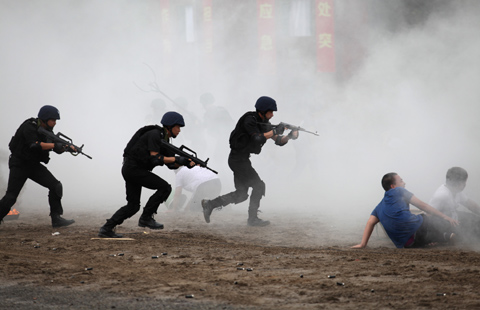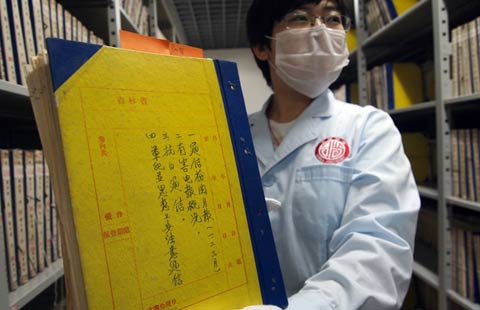Culture vultures swoop across the plateau
By Hu Yongqi and Da Qiong (China Daily) Updated: 2014-06-27 08:09
|
|
Visiting remote villages can be an arduous task because the winding mountain roads make travel laborious. However, sometimes there are no roads at all, so the performers walk, laden with their stage props, costumes and food. Despite this, they always remember to smile during their shows. Some of the more-outgoing farmers join in with the dances, even though their moves rarely match those of the professionals. Nyima Tsering said the ultimate purpose is to make people happy: "It doesn't matter how well people dance. It means a lot that they enjoy our show."
Facilities nowadays are far better than before. "Tibetans are known for their piercing voices, so we didn't use microphones because the quality was poor. Now, though, the audio systems and mics are much better, and our job is to compose and record new melodies for the gordro," he said.
The biwang dance encompasses 131 melodies, which the performers learn by heart, but because only a few of them are able to read sheet music, most find it impossible to compose new tunes.
That difficulty was underscored by Sonam Drolma, an inheritor of the ralpa dance which is also native to Qamdo. She said the dance has been boosted by a 1,000-capacity performing arts center built in the prefecture last year, but the difficulty in finding new material has affected her too.
"The dance can relieve pressure and stress. It won't be difficult to keep this art form alive, but the cultural atmosphere seems to be losing power because an increasing number of young people have moved away to study and don't have time to learn. The government should be doing more," she said.
Recording history
On June 1, as a way of strengthening the protection of indigenous cultures, the regional government implemented a version of the Law on Intangible Cultural Heritages, which has been tailored to suit conditions on the plateau.
The regulation stipulates that governments at prefecture and county levels must cultivate young talent and provide adequate financial support to preserve traditional art forms, especially those listed as intangible cultural heritages.
Since 2006, more than 3,000 officials in the region have been collecting information about all the listed intangible heritages. To date, they have collected about 100,000 transcripts and made 2,000 recordings of traditional music, dances and techniques, said Ren Shuqiong, deputy director of the Department of Culture of Tibet.
By the end of May, 120 million yuan had been spent on the protection of intangible culture, with the central government providing 90 million yuan of the total, she said.
Last week, 123 people were accredited as inheritors of intangible cultures at the Norbulingka Palace in Lhasa. Pema Dawa, a 40-something painter, was endorsed as an inheritor of Chentse-style Thangka, paintings on cotton or silk with a Buddhist theme. He said he was delighted to see the government paying more attention to the preservation of traditional art forms such as his, which dates back to the mid-15th century.
- Courts in China to look out for lawyers
- China to accelerate development of insurance sector
- Electric-car buyers to get
tax exemption - China's progress on health reform 'remarkable'
- China's next kungfu masters
- Mermaids splash coolness to Nanjing summer
- Li: Govt will boost input for healthcare
- Colleges to retest athletes who got gaokao bonuses
- Top court to raise judges' pay
- JV to pay maximum fine for polluting air








